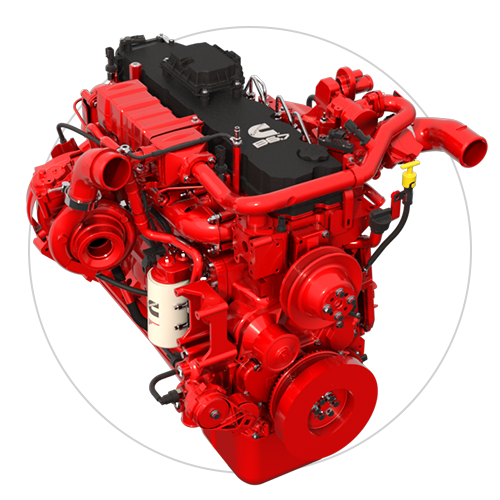The Pursuit for Ultimate Driving Power: Checking Out the Pinnacle of Engine Performance and Technological Innovations in the Automotive Market
In the realm of vehicle design, the pursuit of maximum driving power has been an unrelenting mission that has unravelled via the development of engine design and the combination of innovative technologies. From the careful craftsmanship of combustion engines to the rapid advancements in electric propulsion systems, the automotive sector stands at the cusp of a new era identified by extraordinary efficiency abilities.
Development of Engine Design

Moreover, the integration of turbocharging and supercharging technologies has actually reinvented engine design by boosting power without substantially boosting engine dimension. These forced induction systems compress the consumption air, permitting for even more fuel to be ignited, thus creating better power outcome from a smaller engine. This improvement has actually been especially important in improving the efficiency of smaller sized displacement engines while preserving gas efficiency criteria.

Performance-Enhancing Gas Technologies
The implementation of sophisticated gas technologies has actually considerably contributed to enhancing engine efficiency in modern-day cars. From traditional fuel and diesel to ingenious biofuels, synthetic fuels, and hydrogen, the automotive field is experiencing a transformation in fuel alternatives. Biofuels, originated from renewable resources like algae, corn, or sugarcane, deal decreased exhausts and improved engine effectiveness. Artificial gas, generated via chemical procedures, offer high octane scores, boosting power output. Hydrogen gas cells, although still in the onset of adoption, show wonderful promise as a result of their zero-emission nature and capacity for high performance. In addition, fuel additives and detergents are being formulated to tidy engine components, enhance combustion, and minimize friction, thereby boosting general lorry efficiency. With recurring r & d, the quest for the ultimate driving power continues, as designers aim to unlock the complete possibility of performance-enhancing gas innovations in the vehicle market.
Innovations in Electric Propulsion
Considerable strides in electrical propulsion modern technology have actually reinvented the vehicle sector, leading the way for a new era of sustainable and reliable transport. Electric vehicles (EVs) are obtaining appeal due to their environmental benefits and improvements in battery innovation, enabling longer driving arrays and much shorter billing times. Manufacturers are spending heavily in research study and development to improve the efficiency of electrical propulsion systems, concentrating on boosting power result, improving power effectiveness, and lowering total weight.
One significant breakthrough in electrical propulsion is the advancement of sophisticated electric motors that deliver higher torque and power thickness, resulting in boosted acceleration and general driving efficiency. Furthermore, regenerative stopping systems have been fine-tuned to keep and catch energy during slowdown, additional enhancing the effectiveness of EVs.
Furthermore, the assimilation of smart modern technologies, such as expert system and predictive analytics, is maximizing the administration of electrical propulsion systems, making certain optimum efficiency under various driving problems. These improvements in electrical propulsion are reshaping the auto landscape, driving the sector in the direction of an extra lasting and energized future.
Effect of Computational Liquid Dynamics
With innovations in electric propulsion pushing the limits of automotive modern technology, the combination of Computational Fluid Characteristics is playing a crucial duty in optimizing aerodynamic performance and improving total performance in automobile layout. Computational Fluid Characteristics (CFD) entails making use of computer simulations to examine the flow of air around an automobile, enabling engineers to anticipate exactly how style modifications will impact aerodynamics without the need for pricey physical informative post models. By properly modeling air movement patterns, CFD permits for the improvement of vehicle shapes to reduce drag, boost cooling, and enhance security.
CFD allows engineers to maximize air movement around parts such as radiators, engine bays, and wheel wells, contributing to improved efficiency and total driving experience. In final thought, the integration of Computational Liquid Characteristics represents a considerable step onward in the quest for ultimate driving power and performance in the auto market.
Future Trends in Engine Technology
In the vibrant landscape of automobile design, innovative innovations are shaping the future trajectory of engine innovation. The future of engine style is marked by a solid emphasis on sustainability, performance, and efficiency. Suppliers are progressively concentrating on creating engines that not only deliver high power outcomes yet likewise focus on environmental duty by reducing exhausts and enhancing gas effectiveness.
One popular trend in engine advancement is the rise of electrification. Crossbreed and electrical powertrains are acquiring grip as practical alternatives to conventional burning engines. These innovations supply the capacity for considerable reductions in carbon discharges and raised energy effectiveness, straightening with global efforts to deal with environment change.
Additionally, innovations in materials science and production methods are allowing the manufacturing of lighter and extra resilient engine elements. This change in the direction of lightweight materials such as carbon fiber and aluminum alloys contributes to enhanced efficiency and gas economic climate.
Conclusion
To conclude, the quest of best driving power in the automotive sector continues to drive improvements in engine style, gas modern technologies, electric propulsion, and computational liquid dynamics. The advancement of these technologies is shaping the future of engine advancement, leading the way for a lot more effective and powerful cars (engines for africa). As the industry continues to press the borders of what is possible, we can expect to see even a lot more cutting-edge growths in the mission for peak performance
One of the key turning points in engine website link style evolution is the change from typical carbureted engines to modern-day fuel-injected systems. By exactly metering the fuel distribution to each cyndrical tube, fuel-injected engines maximize burning, resulting in better efficiency and click resources minimized environmental effect.
Moreover, the combination of turbocharging and supercharging modern technologies has actually transformed engine layout by improving power without considerably increasing engine dimension (engines for africa).The application of advanced gas innovations has actually substantially contributed to boosting engine performance in modern-day cars. In addition, fuel ingredients and detergents are being developed to clean engine elements, optimize combustion, and lower friction, consequently enhancing overall lorry performance